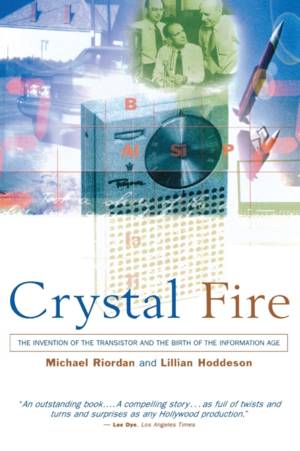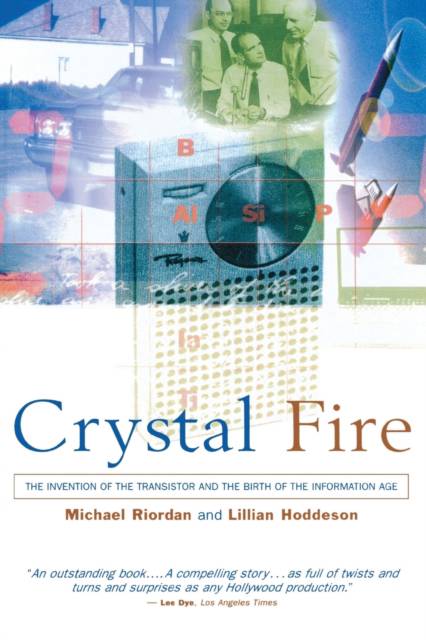
- Afhalen na 1 uur in een winkel met voorraad
- Gratis thuislevering in België vanaf € 30
- Ruim aanbod met 7 miljoen producten
- Afhalen na 1 uur in een winkel met voorraad
- Gratis thuislevering in België vanaf € 30
- Ruim aanbod met 7 miljoen producten
Zoeken
Crystal Fire
The Invention of the Transistor and the Birth of the Information Age (Revised)
Michael Riordan, Lillian Hoddeson
€ 36,95
+ 73 punten
Omschrijving
On December 16, 1947, John Bardeen and Walter Brattain, physicists at Bell Laboratories, jabbed two electrodes into a sliver of germanium. The power flowing from the germanium far exceeded what went in; in that moment the transistor was invented and the Information Age was born. No other devices have been as crucial to modern life as the transistor and the microchip it spawned, but the story of the science and personalities that made these inventions possible has not been fully told until now. Crystal Fire fills this gap and carries the story forward. William Shockley, Bell Labs' team leader and co-recipient of the Nobel Prize with Brattain and Bardeen for the discovery, grew obsessed with the transistor and went on to become the father of Silicon Valley. Here is a deeply human story about the process of invention including the competition and economic aspirations involved all part of the greatest technological explosion in history. The intriguing history of the transistor its inventors, physics, and stunning impact on society and the economy unfolds here in a richly told tale." Science News "Thoroughly accessible to lay readers as well as the techno-savvy. . . . [A
Specificaties
Betrokkenen
- Auteur(s):
- Uitgeverij:
Inhoud
- Aantal bladzijden:
- 366
- Taal:
- Engels
- Reeks:
Eigenschappen
- Productcode (EAN):
- 9780393318517
- Verschijningsdatum:
- 1/12/1998
- Uitvoering:
- Paperback
- Formaat:
- Trade paperback (VS)
- Afmetingen:
- 139 mm x 208 mm
- Gewicht:
- 412 g

Alleen bij Standaard Boekhandel
+ 73 punten op je klantenkaart van Standaard Boekhandel
Beoordelingen
We publiceren alleen reviews die voldoen aan de voorwaarden voor reviews. Bekijk onze voorwaarden voor reviews.











